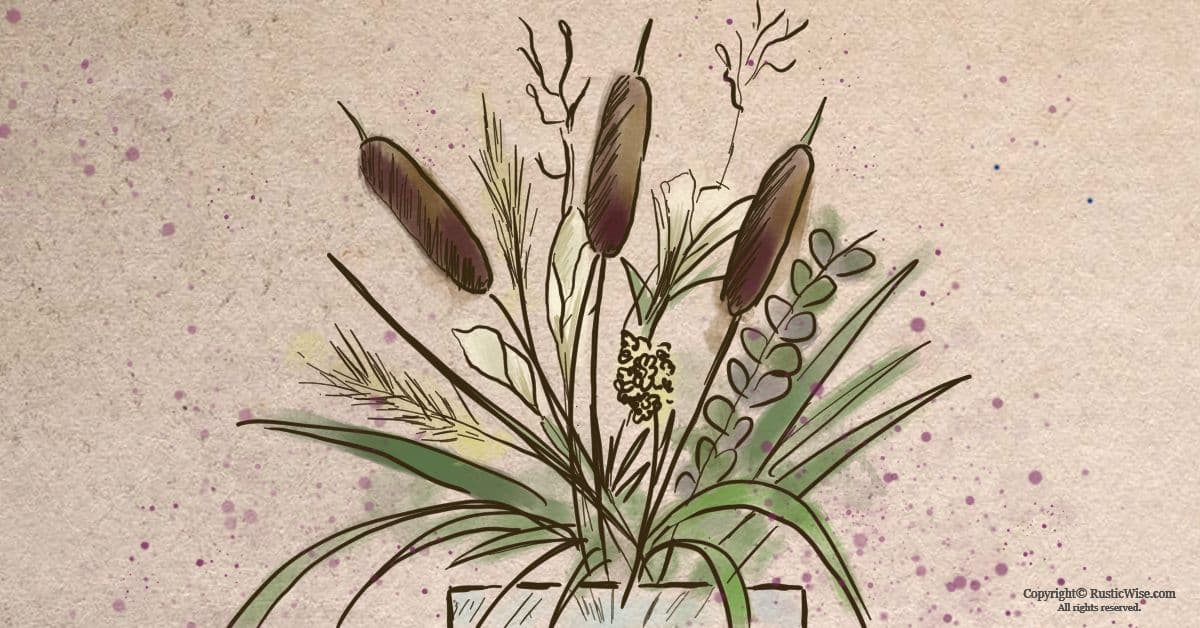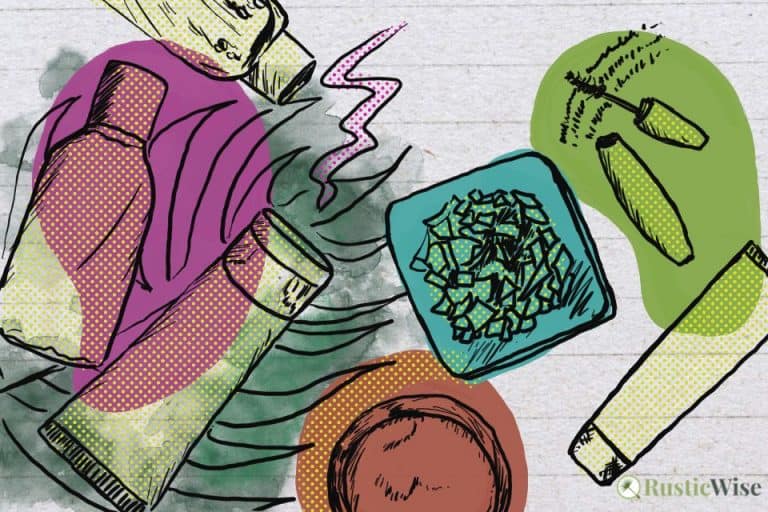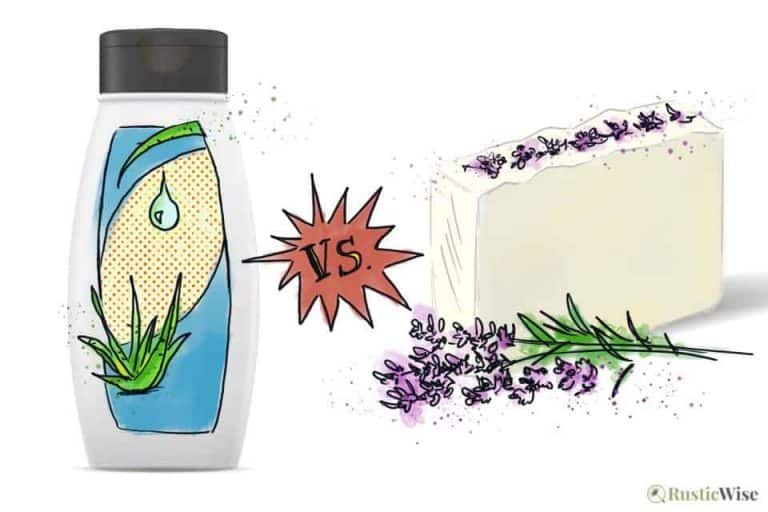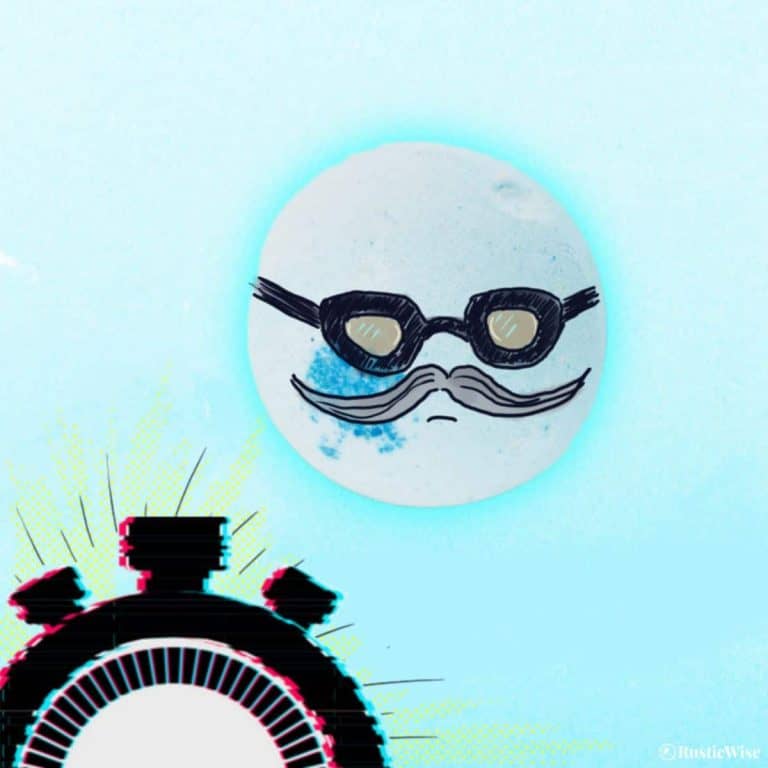How to Preserve Cattails and 3 Easy Ways to Make Arrangements
There’s something about decorating with cattails that brings about a sense of tranquility to your decor. Learning how to preserve cattails and make arrangements is an easy way to bring a piece of the great outdoors inside to spruce up your home.
Sometimes known as bulrushes, or reeds, cattails are found in marshes and wetlands. The common cattail (Typha latifolia) is the most widespread and can be found in most temperate parts of the northern hemisphere. They reach heights of 3-10 feet (1-3 meters) tall making it an attractive plant to add variety to flower arrangements.¹
Preserving cattails is very similar to drying flowers. All you need to do is hang the stems upside down, allow them to air-dry, and apply a hairspray (the cheaper the better!), or a clear lacquer. Dried cattails can last for a year or more.
Let’s learn more about harvesting, preserving, and making cattail arrangements.
“The clear water the color of deeply steeped tea, surrounded by cattails and gracile grasses.”
— Lauren Slater
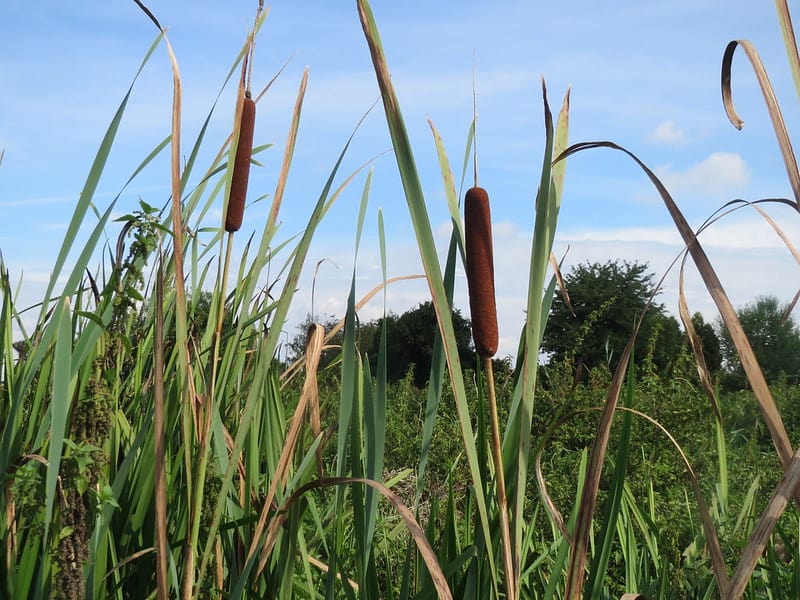
Where do cattails grow?
If you live near a pond, marsh, or wetland, you’re in luck. Just be sure that the area you’re picking cattails from isn’t a protected land or you could face a fine. Often, you’ll find cattails growing along roadsides or ditches. Since you’re only picking these cattails for decorative purposes, these should work fine.
When to harvest cattails
The best time to harvest cattails depends on your local climate or gardening zone. Typically, sometime between early to mid-summer is a good time to harvest cattails. This is when cattails are full of life and before they have gone to seed. The cattail head should be firm and brown with a few flowers left on top.
How to harvest cattails
Break out your rubber boots and let’s pick some cattails!
You’ll need:
- A sharp pair of garden shears
- A large bucket or sturdy garbage bag to carry cattails home
- A pair of gloves (optional)
Once you’ve found some nice-looking cattails, use your shears to cut from the base of the plant. It’s a good idea to leave the stems longer as you can always trim them to the desired height afterwards.
Why preserve them?
You’ll want to preserve cattails properly, so they don’t break apart and make a big mess scattering thousands of seeds and fluff around your house. While some people say that unpreserved cattails “explode” over time, this isn’t exactly accurate. It’s more like they just fall apart and make a huge fluffy mess that can be a headache to clean up.
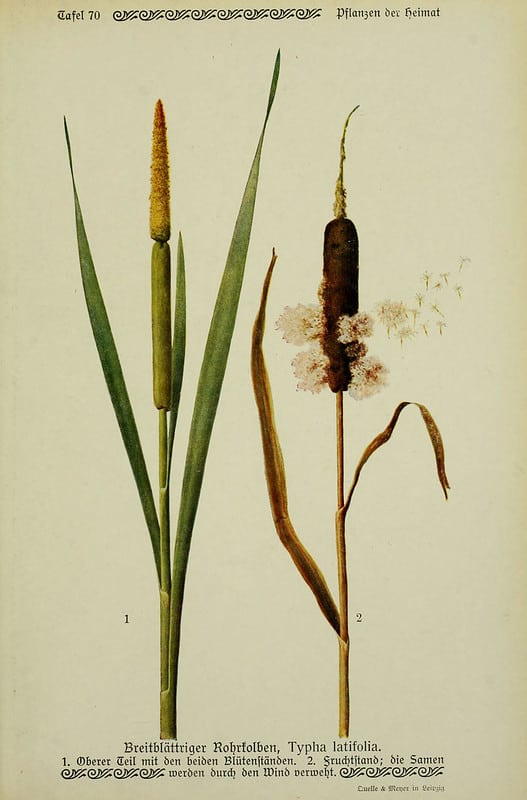
How to preserve cattails: step-by-step
Unlike some types of flowers and plants that contain plenty of moisture, cattails are a naturally dry plant which means they can be dried fairly easily. They make an attractive autumn display, or you can leave them out all year long. Here’s a few things you’ll need to gather to dry cattails.²
You’ll need:
- String or twine to tie the cattails together
- Newspaper
- Hairspray or clear craft lacquer
Save your expensive hairspray for your hair. Cheap hairspray works just as well (perhaps even better).
Step 1
Remove any wilted or unpleasant looking leaves. Cut the cattails to the desired length. You may choose to vary the heights of your cattails or have them all the same depending on the look you’re going for.
Note: Some people choose to remove all leaves, while others prefer to leave them on. It’s up to you. Just know that sometimes the leaves can turn brittle and begin to crumble.
Step 2
Tie a bundle of five or six cattails together about one-inch from the base. If you have lots of cattails, you’ll need to make several bundles.
Step 3
Hang the bundle(s) of cattails upside down in a dry, cool room such as a basement or garage. Keep the cattails away from direct sunlight. The room should have good air circulation to allow the cattails to dry thoroughly. Allow cattails to dry for 2-3 weeks.
Step 4
Once the cattails are dried, it’s time to spray them. Lay newspaper down to protect your working area, and lay cattails down several inches apart. Apply a thin even coat of hairspray or clear lacquer to the entire cattail head (optional: you can also spray the leaves too). Allow to dry. Turn cattails over to spray the other side. Repeat until you have two or three coats.
Step 5
Place your dried cattails in a vase of your choice and enjoy!
Maintaining your cattails
To keep your cattails looking their best, keep them in a dry area away from direct sunlight. The sun will not only bleach the color of your cattails, but also turn them brittle.
Decorating with cattails
Cattails are great for adding height to flower arrangements. You can get creative with the type of vase you use depending on your personal style. Looking for inspiration? Here are three easy cattail arrangement ideas:
1. Cattails with hydrangeas and chrysanthemums
A subtle, classic look with a monochromatic color palette.

2. Cattails with natural birch branches
Sometimes you don’t need any flowers at all…For a lovely understated autumn display, pair your cattails with bare birch branches.
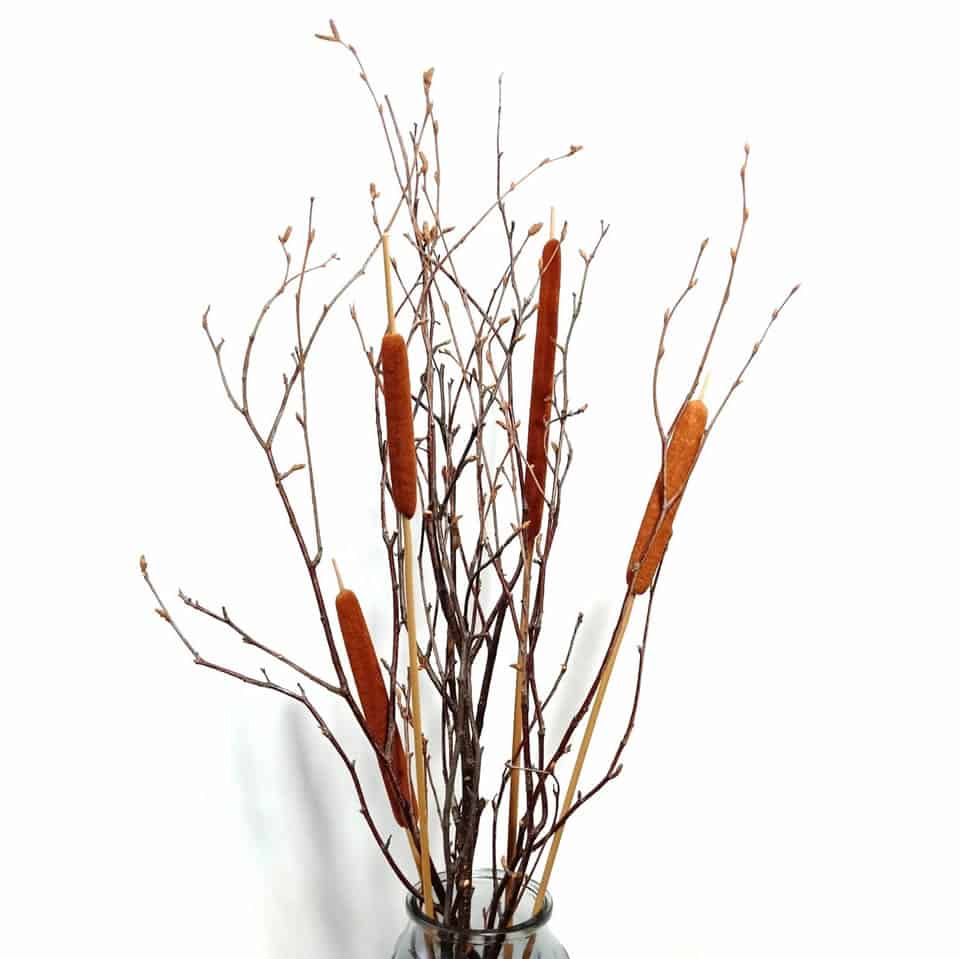
3. Cattails with goldenrod
Go rustic with this pretty cattail arrangement with goldenrod, dried grasses, and a burlap cloth.
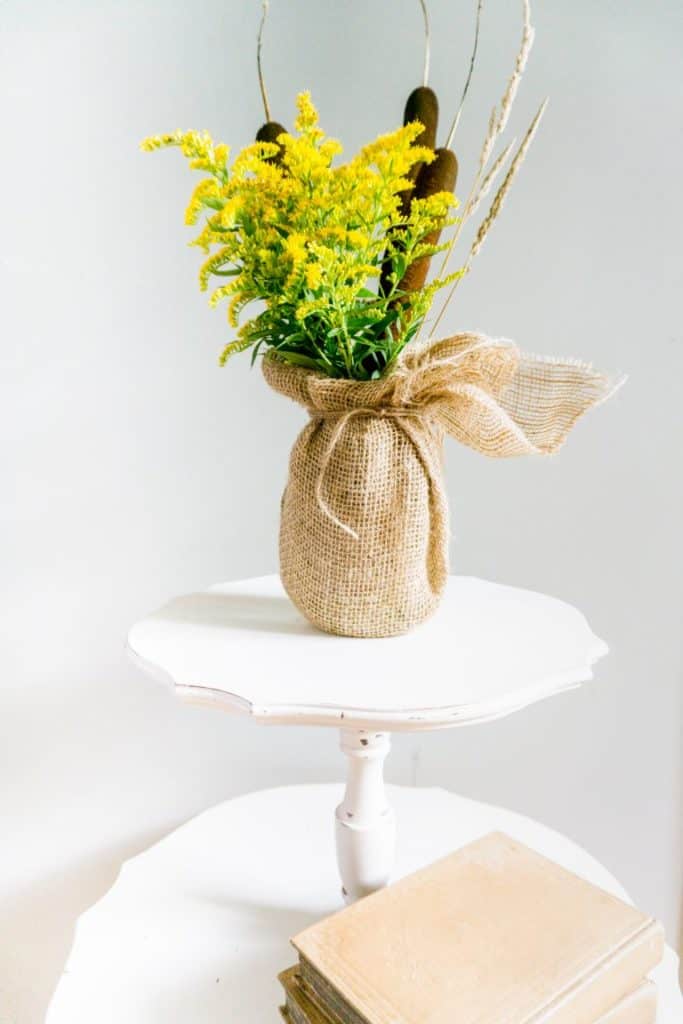
👉 If you like this post, see our Timeless Guide To Foraging for Wild Food. 🌿
Would you like more timeless tips via email?
Fun tips to help you live an independent, self-sustaining lifestyle. Opt-out at any time.


References:
- USDA Fire Effects Information System (FEIS), Typha latifolia, https://www.fs.fed.us/database/feis/plants/graminoid/typlat/all.html. Accessed September 2020.
- Purdue University, Indiana Yard and Garden – Purdue Consumer Horticulture, Bring in Flowers for Drying, https://www.purdue.edu/hla/sites/yardandgarden/bring-in-flowers-for-drying/. Accessed September 2020.

Author: Theresa Tesolin
Theresa is co-founder of RusticWise. She helps people unleash their inner DIY spirit by encouraging them to get dirty and make or grow something from scratch.

